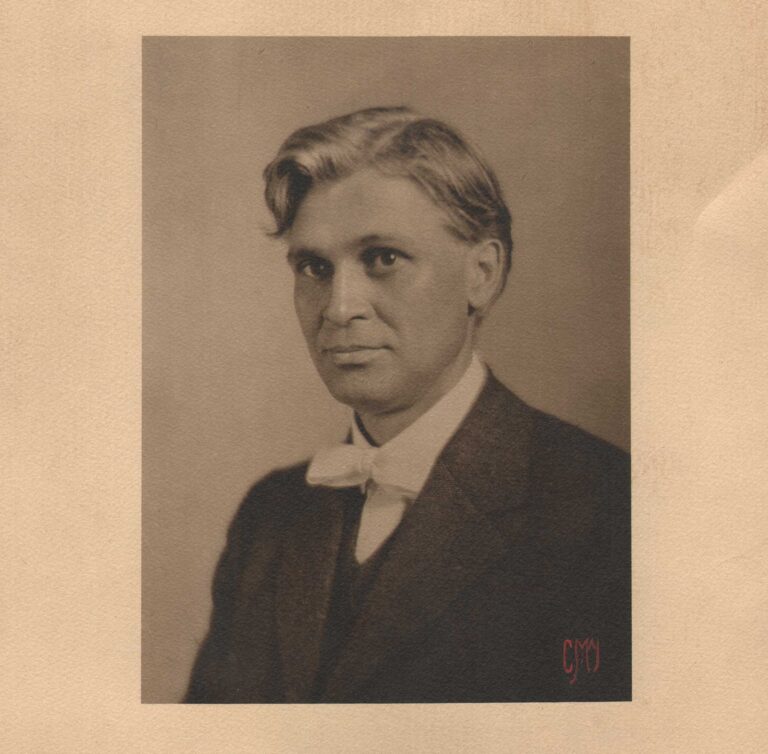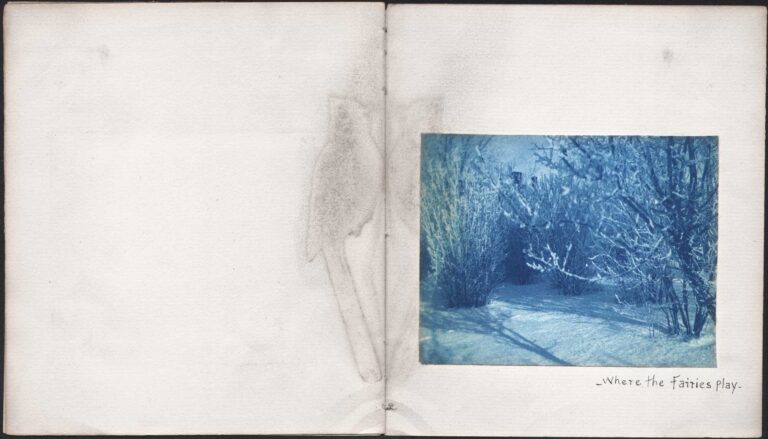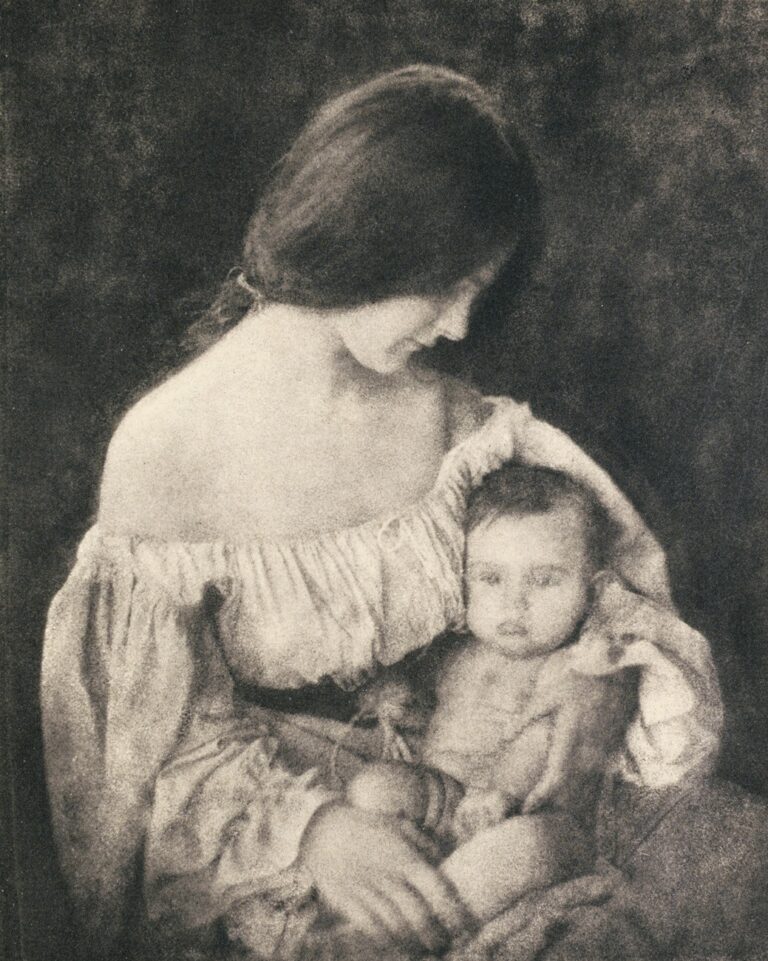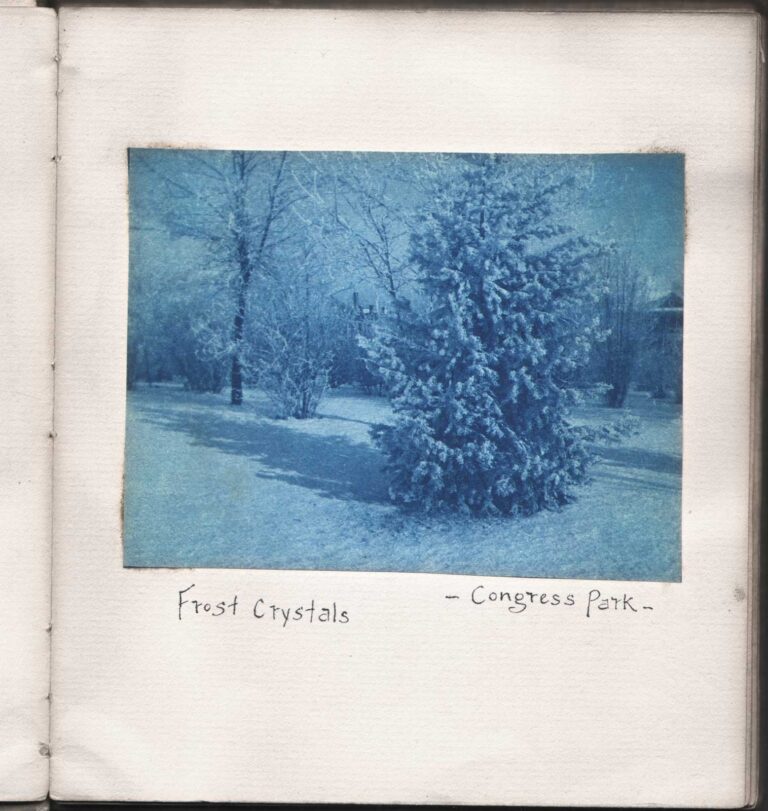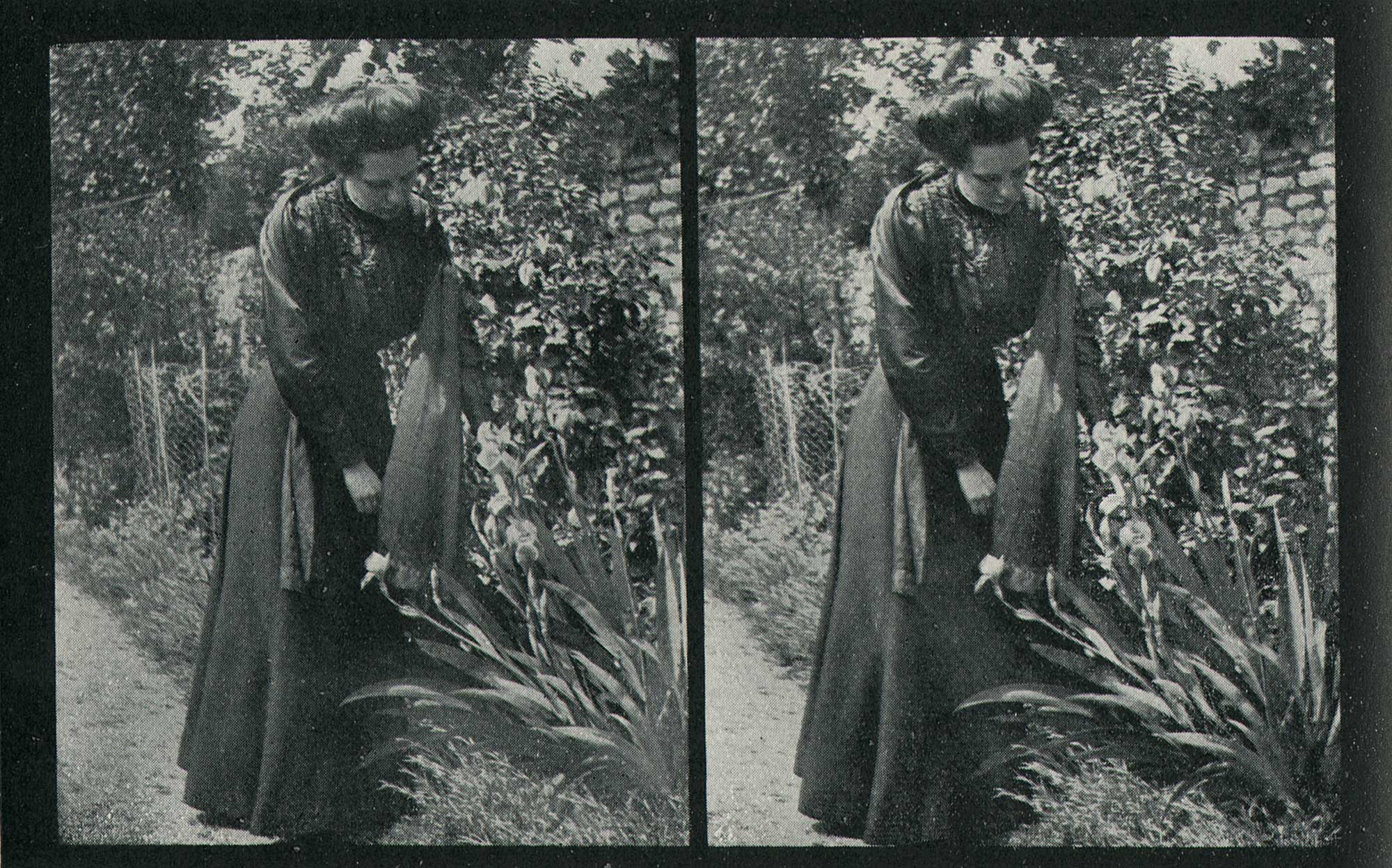
Stereoscoopbeeld | Stereoscopic Image
STEREOSCOPICAL SEEING, WITHOUT A STEREOSCOPE.
The editors of the “Amateur Photographer and Photographic News” were kind enough to give us the negative of the title plate, a reproduction of a stereoscopic plate, which belonged to the article, the translation of which follows here.
We found this article interesting, because several times, especially in English newspapers, means were suggested to see a stereoscopic image, without a stereoscope, in full relief, without our having succeeded in achieving this result. With this image and according to this method we have succeeded, after several vain attempts, in obtaining the full stereoscopic effect, without a stereoscope, the eye armed with the ordinary lorgnette that we use for reading.
Mr. T. E. Heath F.R.A.S, writes about this to the “A. P. a. P. N.” the following:
If stereoscopic photographs could be seen stereoscopically by everyone, or almost everyone with normal eyesight, without the use of any apparatus, they would naturally have great value for illustrating books. I believe they can be seen this way, provided the two stereograms are not further apart than about 2 1/2 inches (about 6.4, say 6½ centimeters), measured from center to center. It is very desirable to be able to establish this fit and I take the liberty of requesting your cooperation and that of our readers for this.
You will therefore oblige me to have the accompanying stereogram reproduced entirely in accordance with the original, i.e. with a distance of 2 1/2 inches and surrounded all around by a black border, with a thick, black dividing line. I believe that postcards with such a stereogram would become very popular. Now I ask all readers who are willing to take the trouble to do so: to hold the statue horizontally, at the same distance from the eye at which one is accustomed to reading fairly small print letters. Those who use glasses for this should put them on. (2)
Now look straight ahead, but calmly and at your leisure, at some conspicuous point in each statue, let us take the lily below the girl’s hand. Suddenly, or gradually, the two lilies will approach each other, to the rear, behind the black border. They will merge and the whole image recedes, in stereoscopic relief, to the rear, behind the black edge.
On each side of the relief image one sees another image vaguely. My ophthalmologist assured me that this is a good exercise for the eye muscles and it is a trick that is well worth learning. When the reader has made a serious experiment, I would like to ask him to answer the following points in writing to the editor, in order to collect any data that can be useful to me. 1st. Could he see stereoscopically before, without a stereoscope? 2nd. Can he see this, or another image, that is mounted in the same way, i.e. at a distance of 2½ inches, after having tried this method, see stereoscopically, without a stereoscope? 3rd. How many times did he try before he succeeded, or before he gave up the matter? (Four to five minutes at a time is enough.) 4th. If his eyesight is normal and he can easily see stereograms that are pasted at a distance of 21/2 inches, stereoscopically, then I also request that he try how far he can remove the pictures from each other at most, so that they still overlap. I do not recommend this, however, because a distance of 3 inches (approximately 7 1/2 cm.) already requires a great deal of effort.
Should many readers wish to answer these questions by postcard to the editors of the Weekly, then for sending those answers, or a collection of the data, will be sent to the A. P. and P. N. (pp. 146-47)
1) Niepce de Victor recorded the results of his research in his “Traité pratique gravure heliographique” (1856). (editors note: it is unclear what this footnote is in reference to as (1) is missing from original text.)
2) The author later improved this indication. He did not mean that the statuette should be held horizontally, one can hold it in any position, provided that the edge lines, from below and from above, are parallel to an imaginary line, which connects the centers of both eyes.
We have noticed that someone, whose two eyes are not sharp at the same distance, can never see the statuette stereoscopically, until he has put on glasses, which correct this irregularity, which is also easy to explain.
